‘The message is the same to all – carry a donor card and tell your family’
Press release for the launch of the TV ‘filler’ Organ Box, July 1993. Catalogue reference: JA 646/149
The idea of organ donation can be an uncomfortable one for many people. It means facing your own mortality or contemplating the loss of a loved one, neither of which are issues most of us want to dwell on. Over the years, the government has run information campaigns to try to encourage more discussion about organ donation within families and communities.
In this blog I’m going to look at one particular campaign from the early 1990s, which was aimed specifically at people of South Asian heritage originating from India, Pakistan, Bangladesh and East Africa. The documents I referred to in my research used the term ‘Asian’ where today it is more usual to use the term South Asian.
1990s Donor Cards
In the early 1990s, people that wanted to donate their organs in the event of their death would carry a ‘donor card’ in their wallet or purse. They would fill in their personal details on the reverse, and tick boxes to say which organs they were willing to donate.
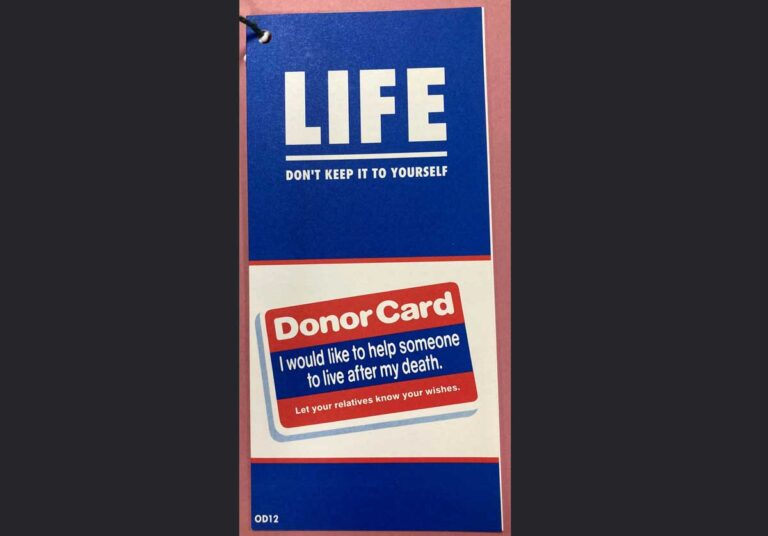
However, doctors still needed to obtain permission from next-of-kin before using tissue or organs, and in practice, grieving families would often find it too distressing to authorise the procedure.
Because of this, the Department of Health wanted to encourage would-be donors to discuss their wishes with their families. Where open discussions had taken place and concerns had been aired, families found it easier to honour their loved ones’ wishes.
Attitudes to organ donation
Organ and tissue transplants are more successful where donors and recipients come from the same ethnic group, and a shortage of donors from South Asian communities meant that those in need of a transplant were facing longer than average waits and indeed might never find a suitable donor.
Research carried out on behalf of the Department of Health and the Central Office of Information (COI) in 1990 had shown that ‘There is evidence that next of kin among ethnic minorities rarely agree to organ donation, which makes the problem of tissue matching more difficult for patients from these groups. The problem is particularly acute with respect to people originating from the Indian sub-continent (Indians, East African Indians, Sri Lankans, Pakistanis and Bangladeshis).’
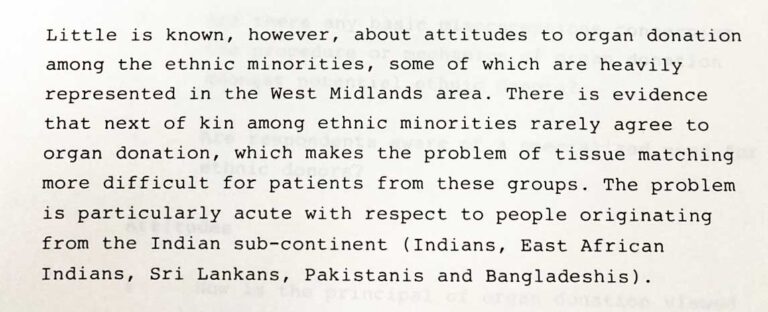
The research took place in the West Midlands and included people with origins in Bangladesh, Pakistan, India and Punjab. The Sikh, Hindu and Muslim faiths were represented, as were single and married men and women from age 18 to 60. Some group discussions were held, along with more in-depth interviews with individuals, parent-child pairs, and faith leaders from each community.
The final report contains 44 pages and is an interesting read. It explores what people knew and understood about organ donation and the organ donor card scheme, and includes a substantial number of verbatim remarks from interviewees. The report concludes that reservations and misconceptions about organ donation need to be addressed and makes recommendations as to how to go about this.
TV ‘filler’
A few years later, in 1993, the Department of Health and the COI decided to commission a short TV ‘filler’. The objectives of the filler were ‘to persuade more Asian people to carry the Donor Card’ and ‘to persuade them to inform their next of kin of their wishes’ (catalogue reference: INF 6/2483). The film had to work for as wide an audience as possible, irrespective of religion or language.
At this time, satellite TV in the UK was less than ten years old and renting films on video was a regular weekend habit for many people. The COI decided that ‘The filler will be seen by the general public on terrestrial, cable and satellite television channels, and will also be inserted in the pre-feature section of Asian films available for hire on videotape.’
Hero, Organ Box and Life
Three film treatments (or ideas) were proposed, titled ‘Hero’, ‘Organ Box’ and ‘Life’.
The storyline for ‘Hero’ features a young boy called Raju playing in his garden, then going to school, growing up and starting work. The script shows the camera pulling out to show a photograph of Raju on a mantlepiece and a voice-over that says ‘Just an average man. An unremarkable man. Until one day last January when Raju saved three people’s lives. By carrying a donor card and letting his next of kin know his wishes.’
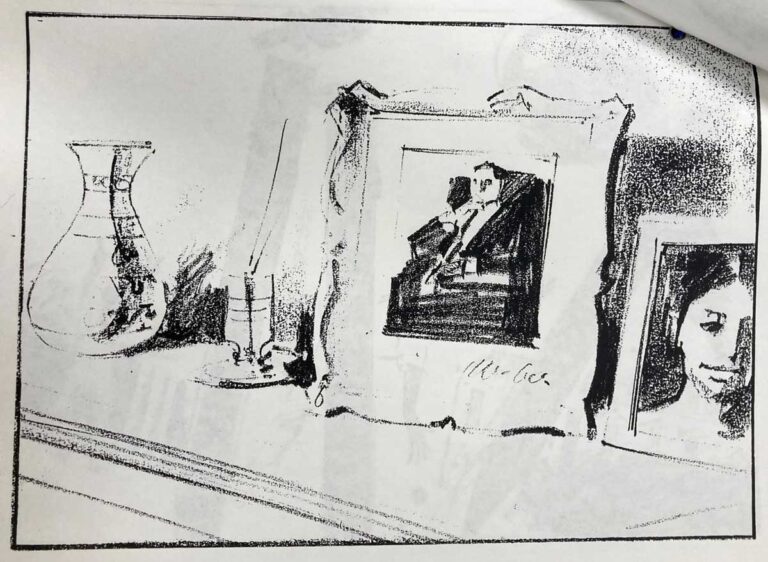
The treatment for ‘Life’ featured 12 vignettes such as a boy playing cricket while his father watches, an Indian woman shopping for her wedding sari with her mother, and a family sharing a picnic. The voice-over says ‘Life is precious. Full of moments of love, joy, and satisfaction… If you carry a donor card, after your death you could help someone else to continue enjoying the riches of life.’
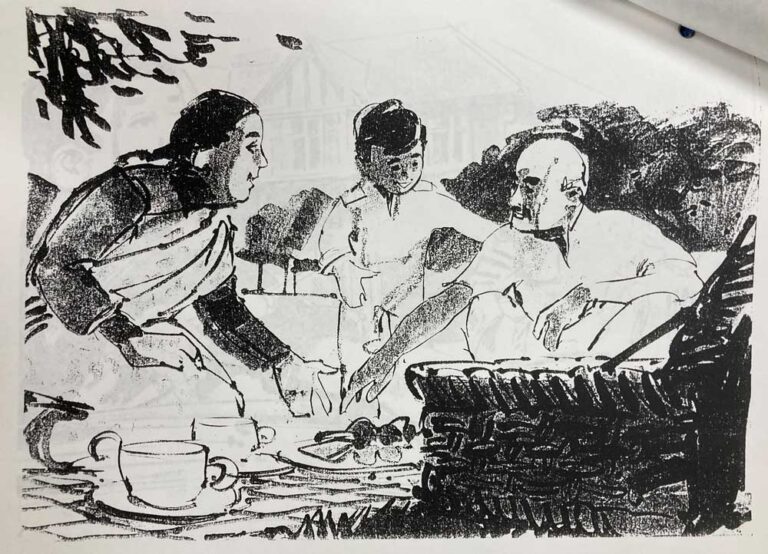
The script for ‘Organ Box’ described ‘reportage style black and white photography’ with scenes of people carrying a box and rushing down hospital corridors passing mostly South Asian patients. At the same time an operating theatre is being prepared and surgeons are scrubbing up. The voice-over says ‘Inside this box is something small but immensely valuable. Something that can give the gift of life.’ Eventually the box reaches the theatre, and the lid is lifted to reveal a donor card.
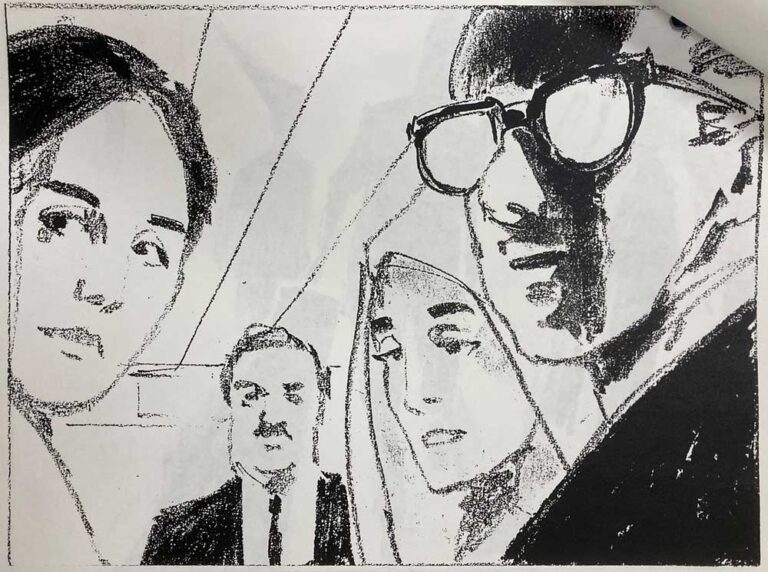
Market research
A market research company was hired to ‘assess the effectiveness of each of these concepts in addressing the filler objectives’ (catalogue reference: INF 6/2483). The research would explore attitudes to organ donation and donor cards, and test reactions to each script and storyboard.
Cost restraints meant that only small sample groups could be used, rather than different groups for each faith or ethnic group. It also meant that women were not represented at all as the research company executive explained that he ‘chose to restrict the sample to men because attitudes and influence in the field of organ donation are male-dominated in the Asian communities’ but that ‘if there were scope for a larger sample, I would have included women as well.’
The first focus group was in Birmingham with Pakistani Muslim men aged between 35 and 55 who were mainly first-generation immigrants. The second group was in Leicester with Gujarati Hindu men aged between 20 and 35 who were mainly second-generation immigrants.
The individual interviews were both with Imams from Birmingham Central Mosque, with the researcher clarifying that ‘I chose to specify Muslim religious authorities for both in-depth interviews because… two interviews with similar respondents have a good chance of producing clear, reliable findings; one Muslim interview and one Hindu would be much less reliable. Costs prevent additional in-depth interviews.’
Organ Box most popular
Of the three TV fillers, the sample audience groups responded best to Organ Box. It had a sense of drama and urgency that was missing from the other two films, and it was the most successful at demonstrating the message that carrying a donor card was important.
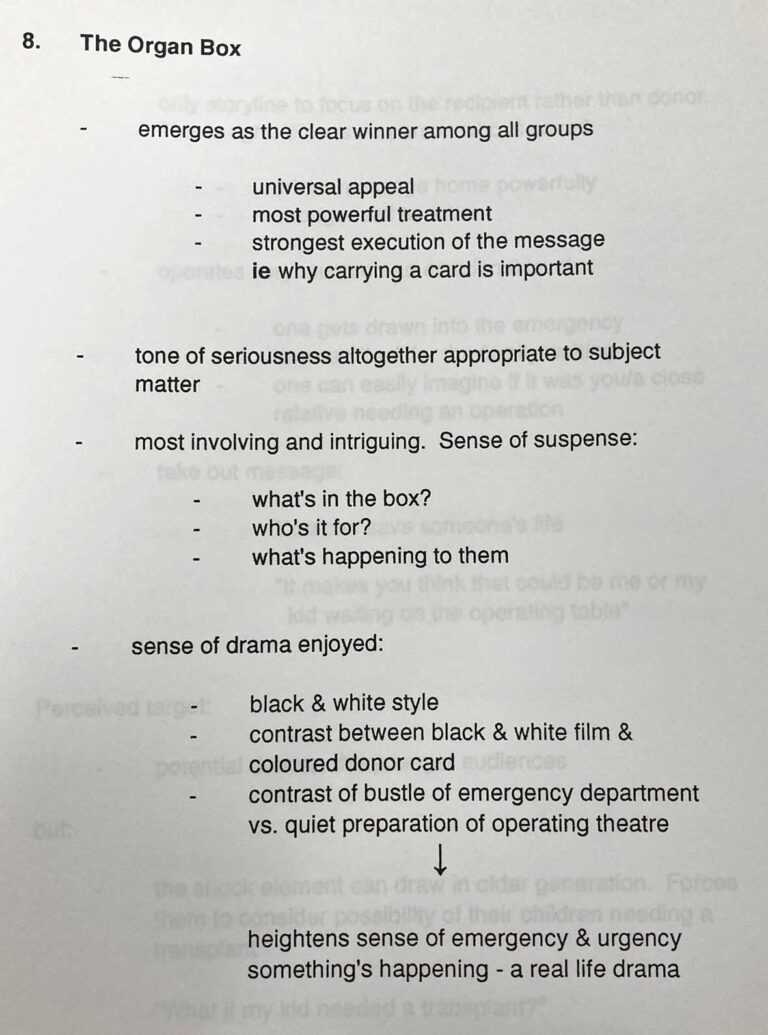
Organ Box went into production and was filmed mostly at St George’s Hospital in Tooting, London. The COI’s publicity release shows the 40-second film available with a voice-over in six different languages: English (by Phil Daniels), Hindi, Punjabi and Urdu (by Nitish Bharadwaj) and Gujarati and Bengali (by Bhaskar) [ref]The document cites Nitish Bharadway which is more likely to be the actor Nitish Bharadwaj. Similarly, Bhaska is probably a misspelling of Bhaskar. Why no forename is included is not clear.[/ref]. You can watch the English version on the BFI player.
Organ Box was launched in Birmingham by Tom Sackville, the Parliamentary Secretary for Health at the time. A press release dated 29 July 1993 stated that ‘Asians have a high incidence of renal failure and because donor organs have to be matched to recipients to minimise rejection, transplants between people of the same ethnic origin is desirable. Consequently, there is a considerable need for more donors from the Asian community.’
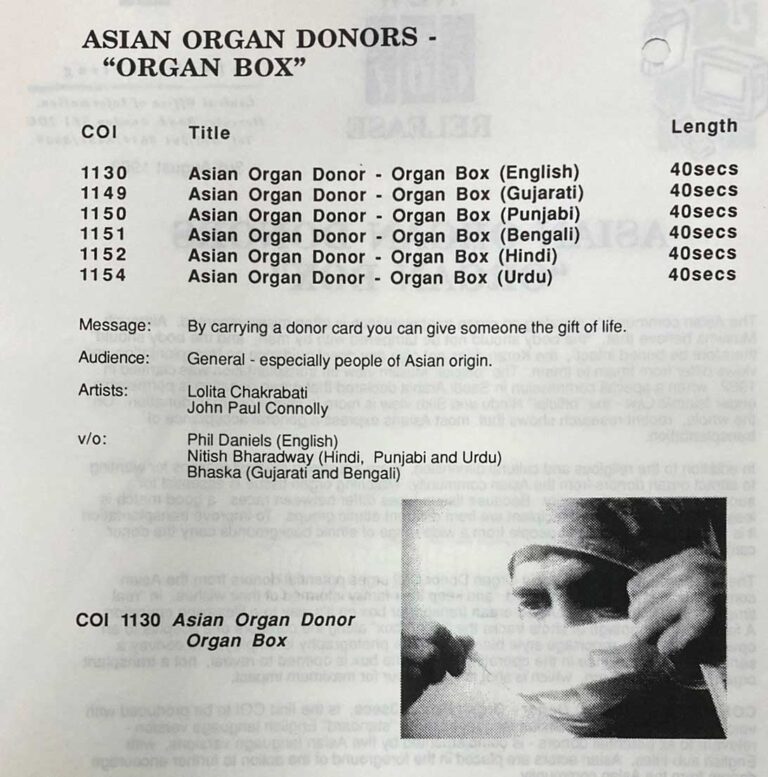
Conclusion
The files used in this blog didn’t include an assessment of the impact of Donor Box on its target audience in the early 1990s. However, there are files from 2000–2001 which also focus on organ donation among ‘Asian’ communities (JA 399/275 and JA 399/276) and African Caribbean and African communities (JA 399/278), so it seems likely there was still a need to promote greater understanding and participation.
In more recent years, Wales, England and Scotland moved to ‘opt-out’ systems where consent to donate organs is assumed unless a person has specifically registered their wish not to do so.
Sources
In relation to the research and production of the film Donor Box, I used four files held at The National Archives: INF 6/2483 to INF 6/2486.
The National Archives also has a number of files from the Transplant Advisory Panel in record series JA 399 as well as other files relating to organ and tissue transplants which can be found by searching our catalogue.